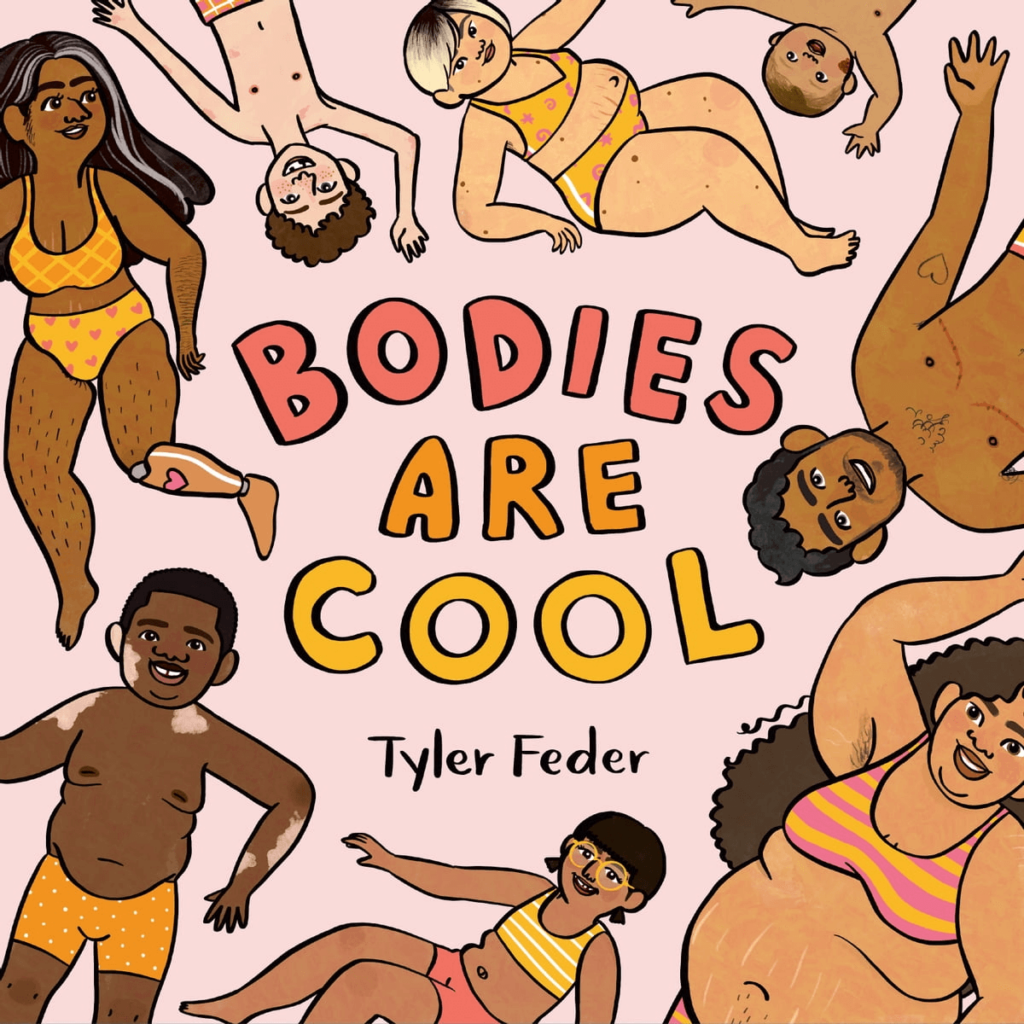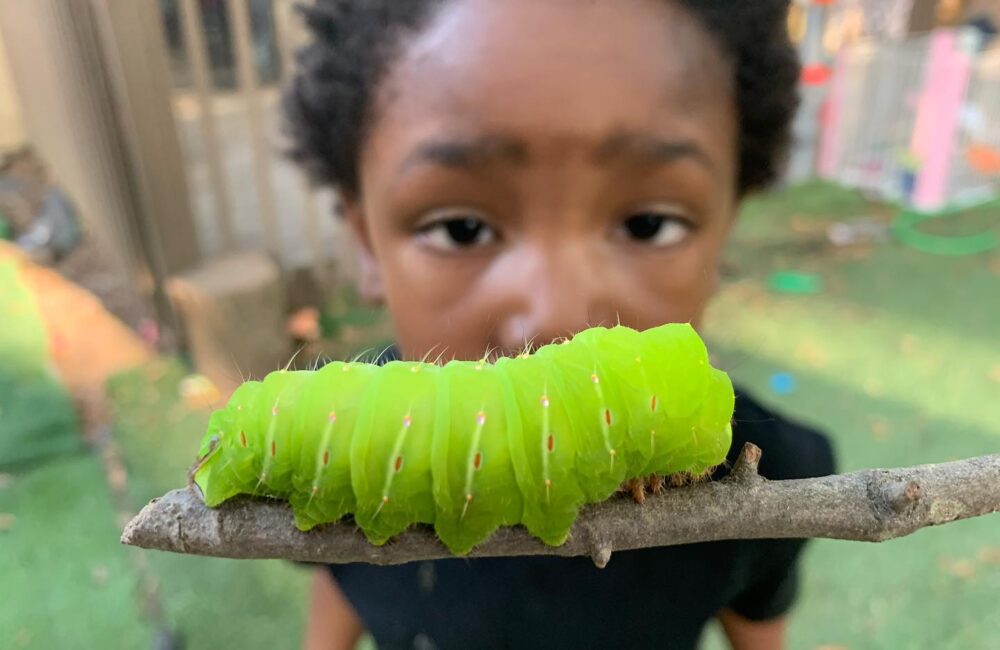Have you noticed bullies and villains are usually portrayed as someone bigger? Or that victims are often portrayed as thin? How about fat characters usually serving as comedic relief?
We live in a culture that defines beauty by white colonial/male standards, and a media landscape that teaches ALL GENDERS that our worthiness is equal to our weight, youth, and beauty. Kids and their curious minds can easily pick up on these messages and this affects how they feel about themselves.
To be “body-positive” means not only to be confident in one’s skin but also accepting of all the different bodies out there. So how do you teach body positivity to your little feminists? We read through all the top tips and research, and summarized the 3 most important tips for teaching our kids body positivity:
Step 1: Love Your Own Body
(Starting with the hardest step first!) Kids mimic us grown-ups, which means we get to share what we love about our own bodies. When we inevitably slip up, talk about how to shift your own body-shaming message. For example, “Yesterday you heard me say ‘My thighs are too big.’ That wasn’t a very nice thing to say to my body. I love that my thighs are big because they help me walk and carry you too.”
Step 2: Call Out Bias
When you hear/see a body shaming message (e.g., “It looks like you ate too much/little ice cream.”) – call it out. Tell your kids no matter what our bodies look like, or how they work, all bodies are good bodies. Side note: call all your body parts, including genitals, what they are. Experts say nicknames for body parts can imply they are something to be ashamed of.
Step 3: Celebrate Underrepresented Bodies
When our kids see body diversity in shows, movies, and books, not only do they feel more included – they also start celebrating differences! Point out clothing ads showcasing big models, share images of athletes using mobility devices, and talk about unique features of movie/show characters.
An important note: inevitably, we will hear our kids say something negative about their bodies. Rather than dismiss their concerns (e.g., “You’re not too tall!”), ask questions (e.g., “When did you start feeling this way?”).
We want all kids (and humans) to be comfortable and confident in their naturally wonderful bodies. Turns out that teaching body positivity starts within our own homes, and bookshelves. Here are 10 children’s books to help your family combat body shaming and promote body positivity:
Lovely by Jess Hong (age 0-2)

- About
A fun and easy read to introduce your littles to simple adjectives. This book gives a bold message about differences showing different types of bodies — colors, shapes, sizes, and styles.
- Why We Love It
We love how the illustrations on each page challenge our own expectations! There are so many bodies and intersecting identities celebrated in this book.
- Things to Know
There are only 1-3 words on every page, which makes Lovely a great read for babies and toddlers (minus the more-rippable paper pages).
Hair by Brook Sitgraves Turner & Archaa Shrivastav (age 0-5)

- About
Beautiful, full-color photos of real-life families showcase all the wonderful forms of hair (curly, straight, twists, locs, covered hair, body hair, even no hair) in this empowering and delightful board book.
- Why we Love it
Hair helps families and educators discuss race, celebrate differences, and challenge racism. We love this book because it includes photos sourced from the Little Feminist community!
- Things to Know
Studies have found that 3-month-old babies will prefer faces that look like their own. While we are also huge fans of colorful illustrations in children’s books, we feel that there is a lack of board books that feature real people’s faces and bodies hence why we published this book in 2020 as part of the We Are Little Feminists board book series.
Bodies Are Cool by Tyler Feder (age 2-7)

- About
An inclusive picture book that wonderfully celebrates all bodies. Every page shows a setting where different communities happily coexist while the rhythmic text tells us what kinds of cool bodies are out there.
- Why we Love it
We love how there are so many representations of bodies in this book- big, small, with stretch marks, surgery scars, and all sorts of disabilities to discuss with your little one.
- Things to Know
The illustrations on each page include someone wearing a colostomy bag, bodies with vitiligo, prosthetic legs, and so many more for you to find as you read along!
How We Eat by Shuli de la Fuente-Lau (age 0-5)

- About
Mealtime just got a whole lot more fun! How We Eat helps families and educators discuss ability, culture, and food at home and in the classroom.
- Why we Love it
This is part of our ‘We Are Little Feminists board book series” and we love that there are not only representations of different food and cultures, but also different kinds of bodies enjoying food.
- Things to Know
This book features Little Feminists enjoying mealtime in various ways – syringe feeding, breastfeeding, gastrostomy tubes, using chopsticks, and many more. If you see something unfamiliar to you, you can learn more at our reading guide here, so that you can explain it to your kiddo.
Everybody Has a Body by Molli Jackson Ehlert (age 2-6)
- About
Showcasing so many different body types, this book will spark curiosity and conversations. Most importantly, our little ones will realize that our body may look different from others – and that it helps us do so very much.
- Why we Love it
“Body neutrality”, which is accepting your body without judgment, may be a new term for some of us, and we love it when we can better understand how to put new things into practice. After the story ends, there is a page with 5 ways to practice body neutrality.
- Things to Know
Some kiddos’ bodies may be illustrated in ways that are unfamiliar to you – take the time to research with your little one. For example, one kiddo creating art has what presents as spots. This is likely vitiligo, an autoimmune disease where skin loses pigmentation.
We Move Together by Anne McGuire and Kelly Fritsch (age 2-7)

- About
Through simple text and powerful illustrations, readers are prompted to ask questions and think deeply about disability rights and inclusion. This beautiful book introduces disability rights in a way that is accessible to young readers, and will undoubtedly have you both noticing whether your surroundings are truly accessible to all.
- Why we Love it
We love that this empowering book normalizes characters of all abilities in a daily life setting. Apart from representing diverse communities, it also shows different people coming together to fight for change, equality, and justice.
- Things to Know
Kelly Fritsch, who is a part of the disability community, co-wrote this book to help fight ableism by featuring characters with visible and invisible disabilities moving together in different spaces.
Laxmi’s Mooch by Shelly Anand (age 4-7)

- About
How do you encourage your kiddo to embrace their unique features? In this story, witness an Indian-American girl named Laxmi embark on a journey to accept her body hair.
- Why we Love it
We love its reminder that loving every part of ourselves (including our body hair) holds transformative power toward others, whether at home or in school.
- Things to Know
Mooch is Hindi for “mustache”. Facial hair is just like body hair – it is natural and is something that no one should be embarrassed about.
Abigail the Whale by Davide Cali (age 5-8)

- About
Abigail is bullied in swim class because she is bigger than the other kids. With the help of her teacher’s encouragement, she turns into all kinds of beautiful things including a whale that gracefully swims through the water.
- Why we Love it
We love that Abigail practices body positivity and combats bullying creatively by mindfully connecting with her body. This is a great book to spark conversations on how to handle being self-conscious when doing activities and sports you enjoy!
- Things to Know
Commenting about a person’s physical appearance – whether it’s intended to be a compliment or not – can damage their self-esteem. Challenge yourself and your family to refrain from giving compliments on physical appearance.
The Big Bath House by Kyo Maclear (age 5-9)

- About
This story lets us peek into Japanese family traditions, as a young girl visits a bathhouse with her grandmother and aunties.
- Why we Love it
We love this glimpse into a female space and the normalization of bodies in all shapes and ages. We also appreciated that while the grandmother and girl cannot speak to one another, they can appreciate rituals together.
- Things to Know
This book positively depicts sento, a type of communal bathhouse, which is an important part of Japanese culture, through illustrations of natural, naked bodies.
Beautifully Me by Nabela Noor (age 5-9)

- About
Read through the story of sweet Zubi and her journey to self-love and acceptance. This amazing book teaches kids that all bodies are beautiful, especially their own.
- Why we Love it
This a great reminder to demonstrate to your kiddos that you accept and love your own body. Let us never underestimate the power of setting a good example and becoming a role model for body positivity!
- Things to Know
The main character’s older sister is on a diet, and the main character thinks about going on a diet too. Some kiddos may not know the word “diet” – but what’s important to discuss and emphasize is that our goal should always be to have a healthy body, regardless of weight.
Body-positive books are even harder to find than racially diverse books! Need help finding books that feature #ALLBODIES? Little Feminist will continue to work relentlessly for a future where your children’s bookshelf looks like the world.
Support our work by signing up for our monthly book club to get books like these at LittleFeminist.com.







 in Oakland, CA
in Oakland, CA